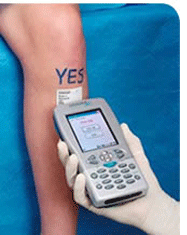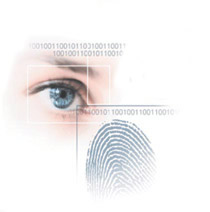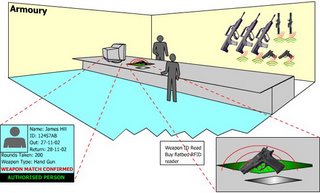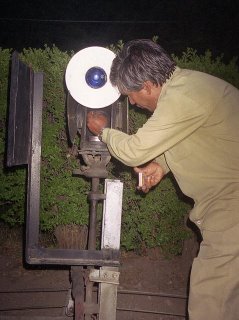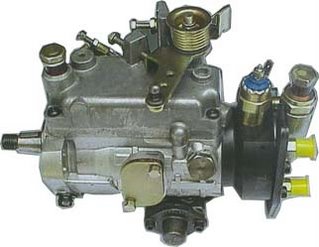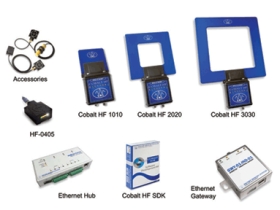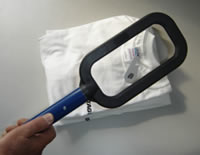 Secure e- tickets & Contact less smart card for Passenger tracking
Secure e- tickets & Contact less smart card for Passenger tracking
Faced with operational efficiency pressures, high employee turnover and dips in customer loyalty, airlines must either drive down cost or create new specialty niches. Customer satisfaction is a global issue. Competitive advantages for airlines do not rest entirely on price.
To stay ahead in this highly competitive industry, executives are looking how to grow their businesses. Smart card/RFID technology tied to a customer, resource or asset at the interface level can generate higher revenues, greater customer service opportunities, high security measures, wider margins and capital optimization.
RFID based crypto smart card as travel document
Smart cards are a combination of microprocessor technology, memory technology and packaging. In general the connections to the smart card are by the use of direct contacts or more recently using short range magnetic coupling. The later being called contact less smart cards or combi cards. The intelligence built in the smart card can execute specific programs allowing high levels of security where the answer deduced by the application matches specific algorithm computed in the card. Smart cards are in use in many applications such as National ID, transportation and banking. Banks have started to use contact less smartcards as cash cards, where electronic money is in effect carried in the card securely as the contents are encrypted. The cards can be recharged by means of automatic teller machines. With the advantage of contact less cards already making waves, combi cards are beginning to enter the markets. The benefits of combi cards are vast and these can be effectively deployed in airline e- ticketing applications. The rfid based crypto smart cards means for the customer tension-free ticketing, no tickets to lose and no last minute queues for tickets on departure, together with greater opportunities for using self-service kiosks.
For the travel agent, electronic ticketing will allow them bigger opportunities to manage the corporate travel experience by being able to make changes to the actual ticket at the same time as the customer is on the telephone and load loyalty points as well and activate them once the passenger checks in. For airlines, it is estimated that around 9 US dollars in savings could be made when an electronic ticket is issued instead of a paper ticket. Use of electronic ticketing and specifically interline electronic ticket will become hassle free.
100% simpler, electronic, paper-free document will save the industry lakhs of rupees per year. Use of contact less smart cards will reduce document-processing costs, printing, and warehousing as well as distribution costs. Electronic tickets will help in improved cash flow, diminished working capital requirements and revenue retention and growth.
International Air Transport Association, (IATA) expects 100% implementation of e-ticketing worldwide by 2007.According to estimates,100% secure e-ticketing will save the industry up to US$ 3.0 billion per year and substantial amounts on security arrangement. IATA handles 300 million paper tickets each year and an e-ticket costs US$1 to process where as paper ticket processing cost up to US$10.
Boarding PassesIATA introduced standards relating to bar codes for boarding passes. The purpose is to decrease lines at airports and reduce airline costs associated with check-in processes. The bar coded portion has information such as boarding number of the passenger, the flight number that he is boarding , three digit unique code reserved for an airline, destination, transfer points, etc. The Departure Control System, while checking in a passenger, also generates the bar coded baggage tag which has all the above information stored in above described format. However the boarding passes are seldom read and verified due lack of scanners installed at strategic points. IATA has initiated plans to introduce radio frequency (RFID) technology in baggage handling. RFID technology in the e-tagging market segment can enable passive object tagging using RF sensing as opposed to optical reading used in case of barcodes. Electronic information about the passenger’s baggage can be stored in RFID chips attached to or embedded in the tags. These chips can send out the stored information when interrogated by a RFID reader. RFID technology has seen growing interest in entire airline industry divisions. RFID technology has application and capabilities which make it suitable for much more than just tags for identifying baggage.
Bar-Coded Boarding Passes (BCBP) outlived?
Contact less Crypto smart cards as boarding passes are to arrive
Recently the use of bar codes for boarding passes facilitated the use of e-ticketing. The reading of barcodes requires line of sight and this usually requires manual attention, where as the use of RFID enabled smart cards as boarding documents will have several advantages for all venture partners. Further Barcodes can be duplicated quite easily and photo copied barcodes read equally well and the security breaches can occur at airports.
Convenience for the passenger
With the use of contact less smart cards, passengers will be empowered to load their own boarding pass securely at home or at the office and thus avoid queues for check-in. All they will have to do is go to a self-service kiosk, and it is also easier handling of itinerary changes and last minute travel decisions. It will lead to more effective use of internet capabilities with secure access.
There are inherent cost savings in using these compared to present access control gates, such as greater reliability, security and fewer mechanical issues that occur with the magnetic stripe readers at the gate and barcode scanners which require line of sight positioning for accurate scanning. The option will exist to place an entire journey plan on one boarding document. This provides an expected link with Electronic Ticketing (ET). For all those carriers that do not use bar code scanners, smart cards provide a much secure way to go forth.
Cost savings from E-tickets:
There are many savings that can be achieved by elimination of printing, postage, shipping, storage and accounting costs. Additional saving is seen by removal of costs for collateral materials (envelopes/ticket jackets) and reduction in airport counter space through increased use of self-service check-ins and increased efficiency in revenue accounting.
Secure entries into the airports
At the airport entrances, RFID enabled crypto smart card e-tickets can be verified for authenticity with advance passenger information to allow the passengers inside the departure area. Mobile smart card readers can be used for authentication and secure transactions by airline staff.
Secure Check in
At check in counters where the baggage is loaded, the baggage ID can be entered into the contact less smart card. It means additional authentication. Usually the bar coded portion of the baggage ID label has information such as Boarding number of the passenger, the flight number that he is boarding , three digit unique code reserved for an airline, destination, transfer points, etc. The Bar coded baggage ID label will be replaced in future with RFID label for better baggage reconciliation at various transit points and this information can be tied and verified at each transit point of passenger.
Self check in at common use self service Kiosks is possible for passengers with only hand/cabin baggage. The kiosks can be shared among airlines, and a smaller number are required for any given airport, and the cost of the operation is also significantly lower with greater throughput. These kiosks can be deployed at many locations outside the conventional check-in areas, e.g. rail/bus stations, car hire plazas, hotel lobbies, etc
Secure cancellation
At the Air craft entry gate RFID tag memory block can be killed making the contact less smart card useless and can allow the smart card with the information for records.
Security Control
My first air travel experience was full of incidents. I boarded flight to Rome, transfer point to destination, Amsterdam. I had six hours transit time and was not sure what to do in an unfamiliar airport. Except for the signs to decipher, I have no information as the language barrier stood in between me and the urge to explore and move freely in the airport. I saw gun wielding commandos staring at every entrance. I had to pass through various unknown gates armed with the transit pass and my travel documents. I am sure this happened to every one of us on their maiden flight to a distant land. With contact less smart cards in place as e-tickets, airlines can assure increased security, efficiency and comfort at airports.
Security and facilitation strive to find the ideal balance between securing the aviation atmosphere and guarantee that the inherent speed of air transport and the passenger experience are not negatively impacted.
Security checks/ Passenger movement and tracking
Security Checks can be authentic as the smart card can contain any biometric attribute of the passenger for verification if needed. Additionally facial recognition systems can interpret the personal photographic data and authenticate at transit points. Frequent fliers/ discount tickets can be authenticated with biometric inputs. Fraudulent methods such as some one traveling with the boarding pass issued to a senior citizen against a discount ticket can be eliminated.
Electronic pedigree
An electronic pedigree is the secure record to document the origins, passenger details, and his travel plan as well as his movements during the course of his voyage. EPedigree’s goal is to record the movements of the passenger through various security corridors. RFID/smart card e-ticket plays a vital role in ePedigree as it is the device used as a secure document. When a passenger enters the airport an RFID tag containing a unique number is attached to his profile. Readers at various entry access gates are used to track the passenger through the path to aircraft entry gate and to the aircraft. The staff can ensure that the passengers were on board.
Many countries now require airlines to send information about passengers in advance of their arrival at their destination. This Advance Passenger Information (API) usually consists of Full name, date or birth, gender, passport number, country of citizenship, country of passport issuance. IATA is eager to see a global solution to this growing issue of access to PNR and privacy implications. IATA can devise protocols similar to NCIP, SIP2 to securely access data by registered users.
More authentic stamping …
The Contact less smart card can be placed on a reader and updated at a faster rate and ensure better throughput. Memory block management guarantees secure transactions. Location identification and the transit points can be logged into the servers to trace the passengers and to help their movements.
Greater customer service opportunities
When a customer is identified and his preferences are understood after interacting with the database, user specific services can be extended. Common use Self-Service kiosks provide convenient access to information as well as enable passengers to independently access capabilities such as self-checkout and self-ordering in airport lounges, coffee shops. For example, a smart card/ RFID tag embedded in loyalty card could trigger a business centre to display services he/she can utilize.
Quick location and removal of bags helps keep planes on schedule, which can save airlines lot of money. Delaying an airplane costs the airport approximately 3 to 4 laks of rupees or more for every five minutes a plane is stalled at the gate. Like any traffic jam the problem quickly compounds. RFID can reduce MCT (Minimum Connection Time) for airlines. The airlines transfer bags to connecting airlines and the largest part of the loss of baggage happens while being transferred on connecting flights. The airline that a passenger arrives on has to forward bags to another airline on which the passenger is traveling , within a specified connecting time, which is usually 30-45 minutes. This is called as MCT (Minimum Connection Time) and for an airline this is benchmark indicator of its operational efficiency at a particular airport. The contact less smart card e-ticket securely pass information via network, when a passenger arrives/confirms in for connecting flight either through kiosk or at check in area security access gates.
Customer relations management
RFID based proximity sensing applications can be used to identify the frequent flyer and deliver highly specific messages, leading to easy identification. Loyalty Program Management can be efficiently managed with data collection at the source.
I had flown by one national carrier in the morning and booked late evening return ticket on another airline as the timings did not meet my requirements. Advanced information was available to the air carrier when I was checking in the morning that I have a ticket by evening flight by another airliner. I questioned how they have such information. When airlines can collect such information in advance, I wonder, why can not they simply log in the departure and mileage to the frequent fliers account, rather than asking the passenger to enter every time?
Other opportunities
Crypto secure smart card e-tickets will improve security at airports. The smart cards can carry biometric information for further enhancement of security. Biometric abstract images and attributes can be loaded into these cards for verification and can be linked to pass port information. Gradually electronic passports are being introduced worldwide and with well defined data exchange protocols, necessary information can be securely exchanged.



